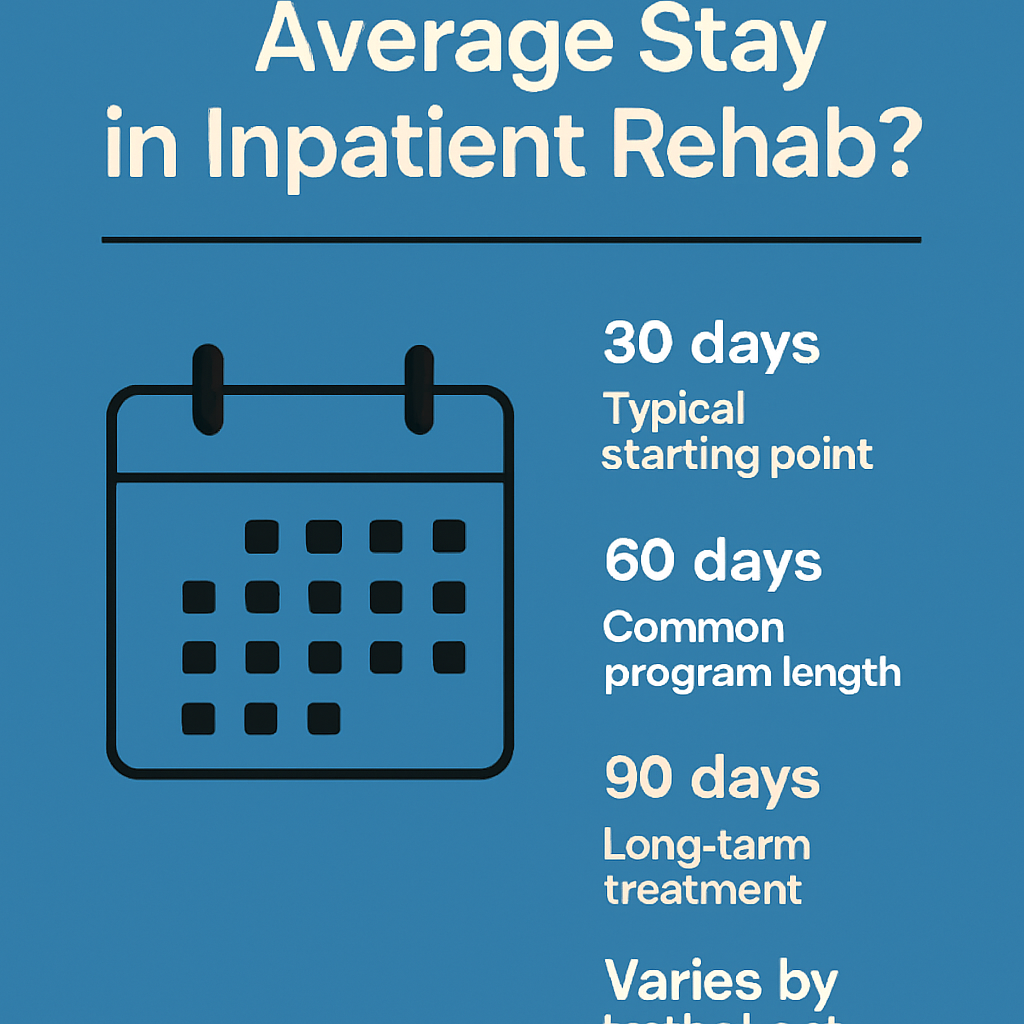Last Updated on August 11, 2025
What Is the Average Stay in Inpatient Rehab? Duration, Factors, and Recovery Outcomes
When someone decides to enter inpatient rehab for substance abuse, one of the first questions is: “How long will I be there?” The average length of stay is about 28 to 30 days. However, many programs offer options that extend to 60 or even 90 days. The actual duration depends on the individual’s needs and the severity of their addiction.
Shorter rehab stays can help people begin recovery. But research shows that longer treatment leads to better long-term outcomes. This blog will explore the different program lengths, what affects the duration, and why extended care often leads to greater success in recovery.
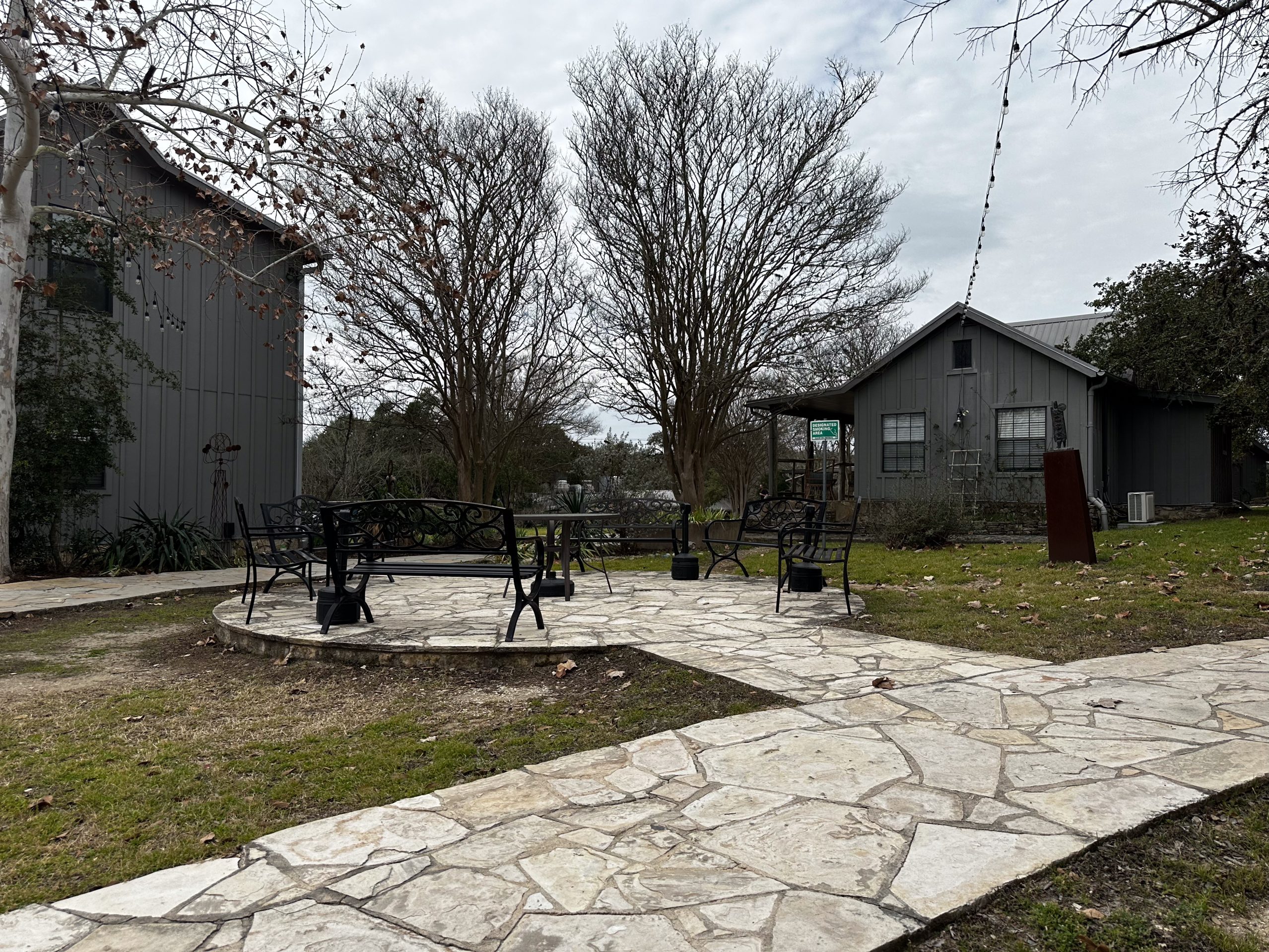
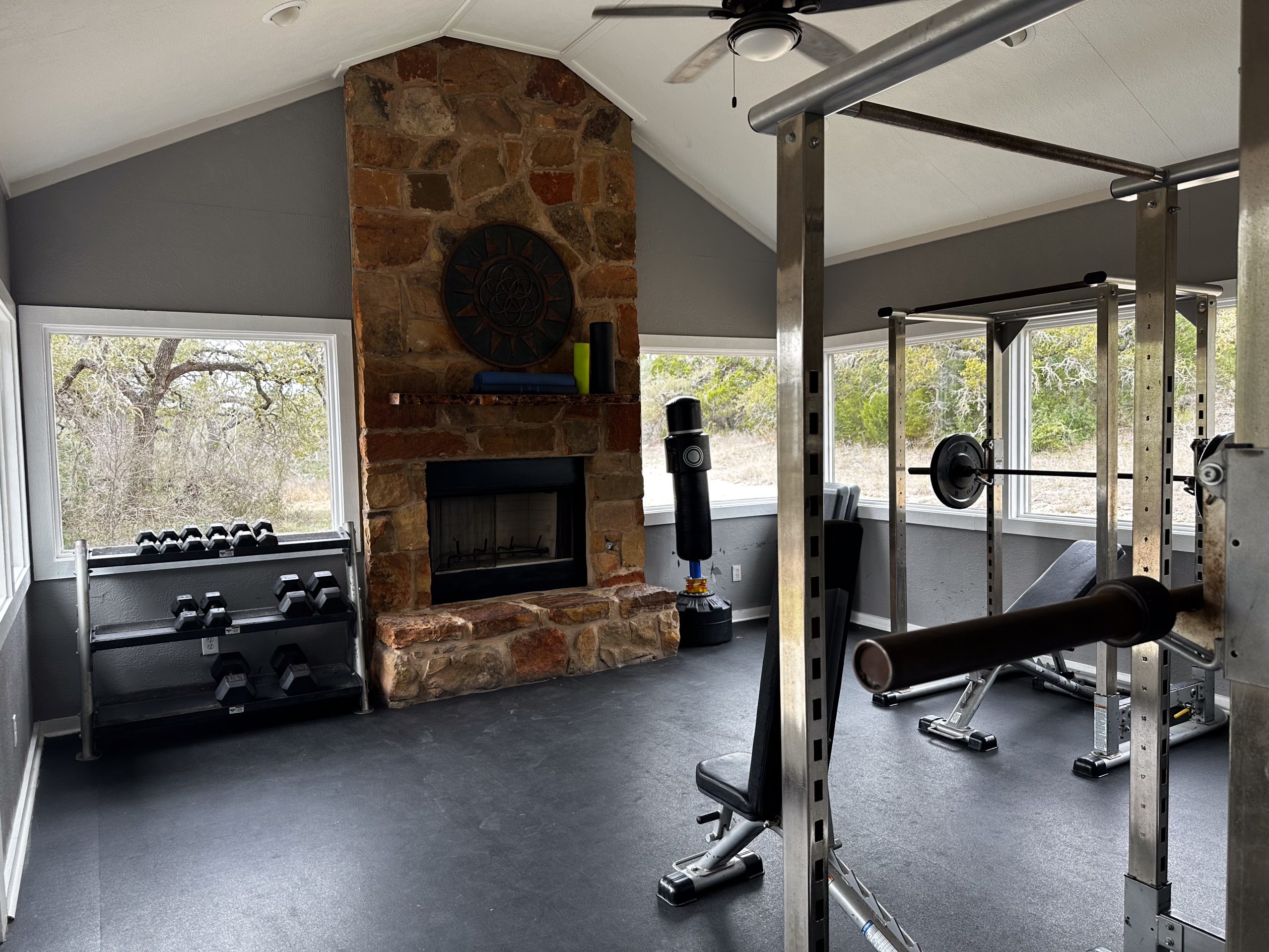
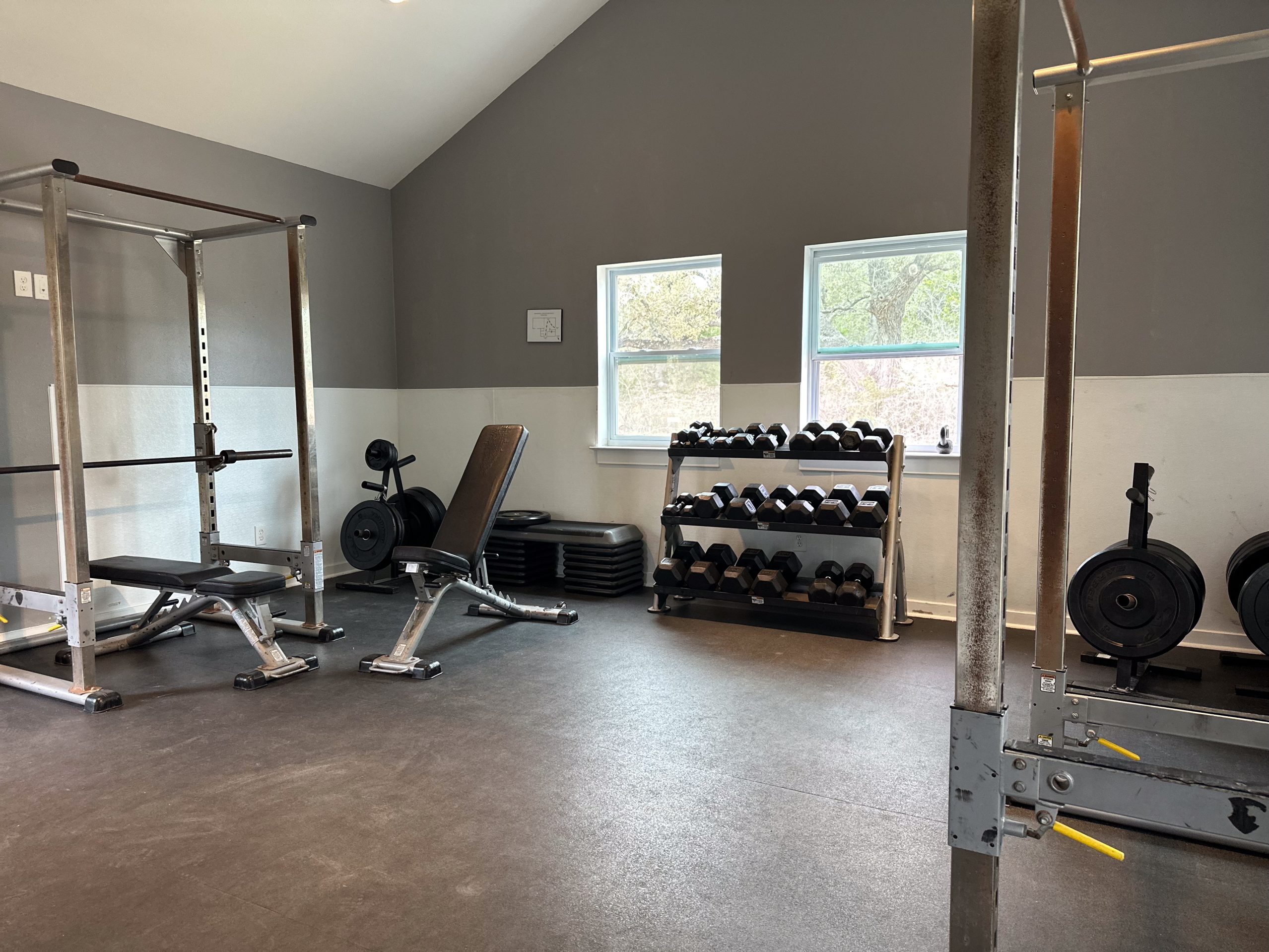

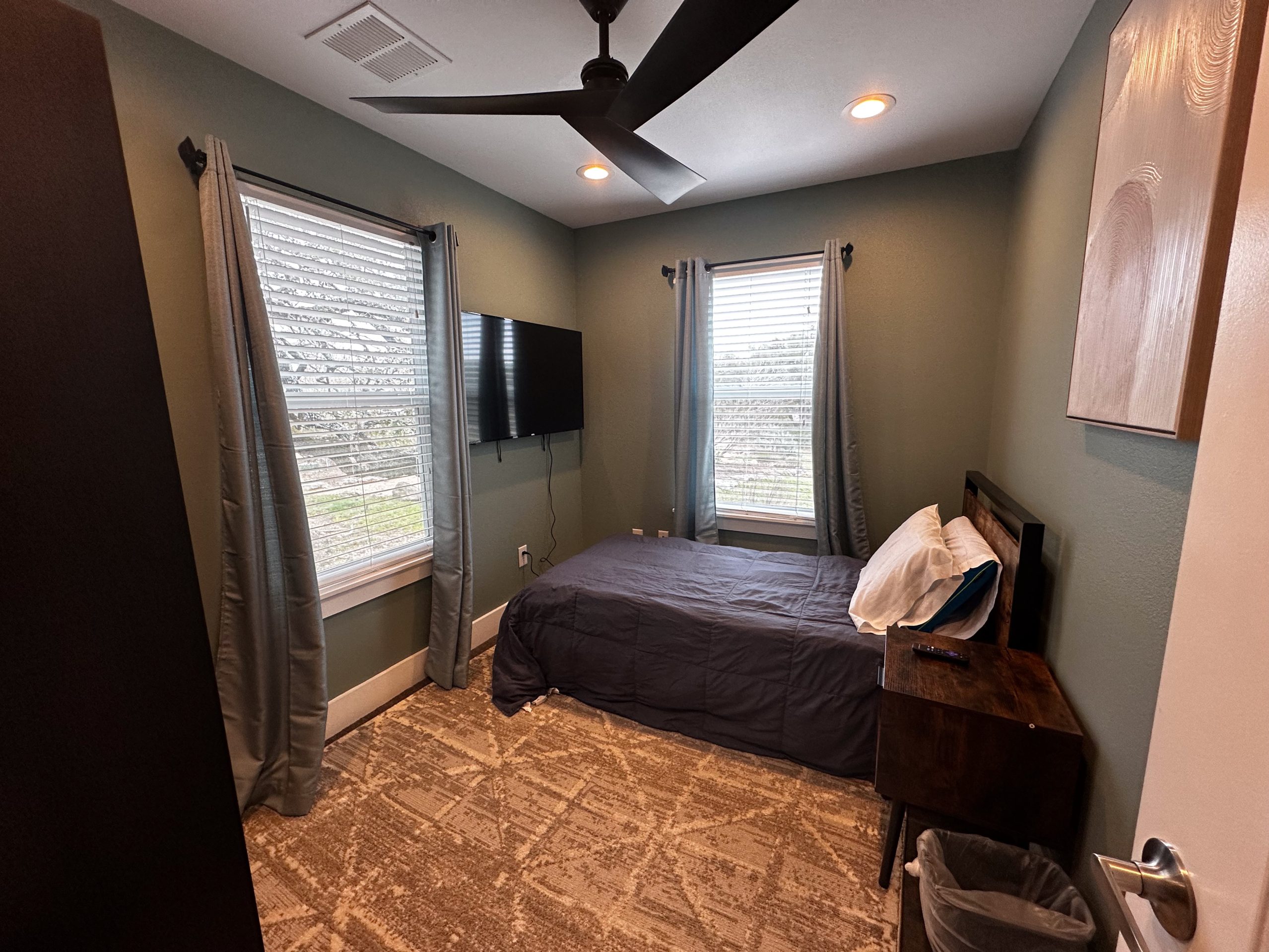





30-day rehab programs
The Standard 30-Day Stay: A Starting Point
Most inpatient rehab programs begin with a 28–30 day schedule. This one-month stay has become a widely accepted model in addiction treatment. It provides a structured, supportive environment that removes people from the triggers of daily life.
In this time, individuals complete detox, attend daily therapy, and start to build the tools for long-term recovery. The 30-day timeframe also aligns with common insurance approvals, which makes it a practical starting point for many.
But 30 days is not a fixed requirement. It’s just a common baseline. For many people, especially those with more severe addictions, 30 days is not enough. It is often just the first step in a longer recovery process.
Inpatient Rehab Duration
Program Options: 30, 60, 90 Days or More
Inpatient rehab programs come in various lengths. Common options include:
30-Day Programs: Short-term care focused on detox and early recovery.
60-Day Programs: More time for therapy and skill-building.
90-Day Programs: Long-term care with deep behavioral work and life restructuring.
Extended Programs (6–12+ Months): Designed for those with chronic relapse or severe addiction.
These options allow rehab centers to customize treatment plans. A person struggling with a long history of drug or alcohol use may need a 90-day program or more. Someone with a mild addiction and strong family support might do well with a 30-day stay.
Longer programs help people dig deeper into the causes of addiction. They also give more time to practice sober living in a supportive setting.
60 vs 90 day rehab
Factors That Influence Rehab Duration
Rehab length varies because addiction affects each person differently. Several factors help determine how long someone should stay in inpatient treatment.
Severity and History of Addiction
People who have used substances for many years may need more time to recover. If a person struggles with powerful drugs like opioids or meth, longer rehab stays are often more effective.
Co-Occurring Mental Health Conditions
When someone has both a substance use disorder and a mental health condition like depression or anxiety, treatment becomes more complex. These individuals often benefit from longer stays so both issues can be addressed.
Previous Treatment and Relapse
Those who have relapsed after past treatment may need more time in rehab to develop stronger coping strategies. A history of multiple failed attempts can indicate the need for extended care.
Progress During Rehab
Some people respond quickly to treatment. Others take longer to build the skills they need to maintain sobriety. Rehab staff adjust plans based on how each person progresses.
Outside Support Systems
People without a safe or sober home environment may benefit from staying in rehab longer or moving into a sober living home afterward. Strong support systems at home can allow for a shorter stay and faster transition to outpatient care.
Freedom Starts Here. Take Back Your Life Today.
Same-Day Admissions in Austin Available.
Longer Treatment Means Better Outcomes
Research shows that longer treatment leads to better recovery outcomes. The National Institute on Drug Abuse (NIDA) recommends a minimum of 90 days of total treatment. This includes both inpatient and outpatient care.
People who stay in treatment for fewer than 90 days often relapse. Addiction is a chronic illness, and recovery takes time. Longer rehab stays give people the chance to work through issues at a deeper level and build lasting habits.
In one analysis, patients who remained in treatment for 90 days or more had better success staying sober. They also had better job outcomes and improved overall mental health. Short-term stays, while helpful, often don’t allow enough time for these benefits to develop.
Why Rehab Is Just One Step
Inpatient rehab is usually the first stage of recovery—not the last. Most treatment plans include a step-down approach. After inpatient rehab, individuals often move into outpatient care, sober living homes, or continued therapy.
This transition keeps people engaged in their recovery journey. For example, someone might spend 30 days in inpatient rehab, followed by several months in outpatient counseling and a recovery support group.
This combination of services helps people adjust to daily life while staying accountable. Support doesn’t end when someone leaves the facility—it continues as long as necessary.
Many experts recommend at least 90 days of combined inpatient and outpatient care. In fact, some people benefit from follow-up support for 6 to 12 months or more.
The Role of Personalized Care
There is no universal answer for how long someone should stay in inpatient rehab. Recovery must be personalized. Some people find stability after 30 days. Others need 60 or 90 days or longer.
Treatment providers assess each person’s situation. They consider addiction history, progress in treatment, home life, and mental health. Based on this information, they recommend the right length of care.
The goal is not to finish treatment fast—it’s to finish it right. Recovery takes time, patience, and support. A person is more likely to succeed if their care plan fits their needs.
Other Outpatient Drug and Alcohol Rehab Locations
Substance Abuse Treatment Timeline
Continuing the Recovery Journey
Leaving inpatient rehab doesn’t mean treatment is over. Recovery is a lifelong process. Many people continue with therapy, attend 12-step meetings, or live in sober homes after rehab.
These next steps help people stay on track. They also give space to grow and adjust without slipping back into old patterns. Long-term support greatly improves the chances of staying sober.
Treatment providers usually develop a full aftercare plan before discharge. This plan might include:
Medication-assisted treatment (if needed)
Relapse prevention strategies
Referrals to sober living housing
Support groups and community meetings
With these supports in place, individuals leave rehab with confidence and a safety net.
It’s About Quality and Time
The average stay in inpatient rehab is about 30 days, but that’s only the beginning. Many people benefit from longer stays, and studies show that extended treatment improves outcomes.
What matters most is the quality of care and how well it matches the person’s needs. A 30-day stay can be a powerful start, but it is rarely enough on its own. Recovery works best when it’s personalized, flexible, and supported over time.
Inpatient rehab is an important step. It helps people break free from addiction and build the skills for a healthier life. But the full journey includes continued treatment and long-term support.
If you or someone you love is considering rehab, remember: the goal isn’t just to get through 30 days. The goal is lasting recovery—and that takes time, dedication, and a plan that fits.


